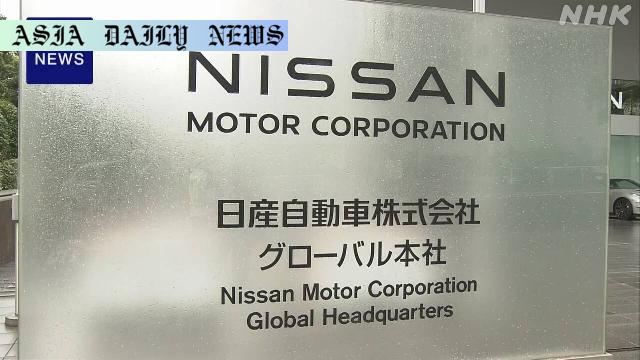Nissan Motor reports a net loss of over 115.7 billion yen driven by declining sales and tariff impacts.
- Nissan reported a net loss of over $780 million for the April-June quarter.
- The automaker also predicted an operating loss of 180 billion yen for April-September.
- Challenges include declining sales and the impact of US tariffs totaling 68.7 billion yen.
- CEO Ivan Espinosa expressed uncertainty over tariff measures’ precise timing and scope.

Nissan Reports Major Financial Loss for April-June
Nissan has revealed staggering financial results for the April to June quarter, reporting a net loss of 115.7 billion yen, which translates to approximately $780 million. This significant downturn highlights a combination of struggles, including declining global sales and the effect of U.S. tariff measures, which alone contributed 68.7 billion yen to the losses. Additionally, the automaker noted an operating loss exceeding 79.1 billion yen for the quarter, underscoring the severity of its financial challenges as it strives to stabilize its performance amid uncertain market conditions.
Impacts of Tariffs on Nissan’s Performance
A major factor contributing to Nissan’s performance woes has been the imposition of tariffs by the U.S. administration. These trade measures have severely impacted the automaker’s cost structures and business operations, making long-term planning difficult. Ivan Espinosa, President and CEO of Nissan, acknowledged the uncertainty surrounding the timing and specifics of the tariff implementations but stressed that the company is monitoring the situation closely. He assured that updates would be provided once more definitive conditions are established to mitigate the disruptions caused by these trade barriers.
Forecast for Further Losses
Nissan’s outlook remains grim as it braces for a continued period of financial instability. The company has forecasted an operating loss of 180 billion yen for the six months ending in September. Such projections suggest that the automaker’s recovery may take longer than anticipated, especially as external challenges like tariffs and fluctuating market demand persist. Nissan, once a symbol of resilience and innovation in the automotive world, must now recalibrate its strategies to address these immediate pressures while also ensuring long-term competitiveness.
Potential Solutions and Recovery Strategies
In light of these setbacks, Nissan must focus on creating resilient strategies capable of weathering economic uncertainty. Diversifying its global market strategy, improving operational efficiencies, and investing in next-generation technologies such as electric vehicles (EVs) could provide a path to recovery. Additionally, building stronger trade partnerships to mitigate the impact of tariffs and implementing cost-control measures across its supply chain may assist in addressing financial losses. Nissan’s ability to adapt to shifts in the global automotive landscape will be critical in regaining investor and consumer confidence.
The Road Ahead for Nissan
While Nissan faces immediate and significant pressures, the automaker’s path forward will likely be determined by a mix of strategic innovation and market responsiveness. Stronger leadership and a renewed commitment to streamlining operations while maintaining customer satisfaction may help set the company on a course for future success. As the global automotive industry moves towards electrification and advanced technologies, Nissan has opportunities to reaffirm its position as a leader, but only if it can overcome these turbulent times.



Commentary
Understanding the Context of Nissan’s Financial Struggles
Nissan’s recent financial loss, amounting to over $780 million, raises profound questions about the sustainability of its current business practices. While the Japanese automaker has long been a major player in the global automotive market, the recent losses indicate a confluence of external and internal challenges. Chief among these has been the growing uncertainty in global trade policies, especially with the impact of U.S. tariffs that not only shrink international profits but also complicate the already fragile recovery from declining sales.
The Role of Trade Tariffs in Triggering Financial Loss
Trade measures imposed by the U.S. administration on key imports have clearly disrupted Nissan’s operational flow. Tariffs totaling 68.7 billion yen have strained Nissan’s finances, effectively forcing the company to reevaluate its cost structures. For a global automaker reliant on streamlined international production and import operations, this marks a significant challenge. As globalization becomes less predictable, it is pivotal for manufacturers like Nissan to reassess their supply chains and explore avenues such as localized production to offset tariff constraints.
Charting a New Course for Stability
Despite the grim financial outlook for this fiscal period, there is room for Nissan to navigate a route toward recovery. This, however, demands extraordinary measures. Innovating within segments such as electric vehicle technology while addressing consumer expectations for high-tech, sustainable solutions can position Nissan favorably amidst market shifts. Coupled with an effective cost-control plan and strategic diversification of markets, the automaker can begin reversing its losses. However, this will require prompt and decisive action to translate opportunities into tangible results.
Lessons for the Broader Automotive Industry
Nissan’s struggles also serve as a cautionary tale for the broader automotive sector, which faces changing customer needs, environmental regulations, and geopolitical instability. As global players, automakers must prioritize adaptability and resilience, ensuring that external shocks such as tariffs do not destabilize core operations. Collaboration and innovation will be key in weathering these challenges, and Nissan has both the expertise and legacy to turn these obstacles into stepping stones. Only time will reveal if it can execute its recovery strategy effectively.